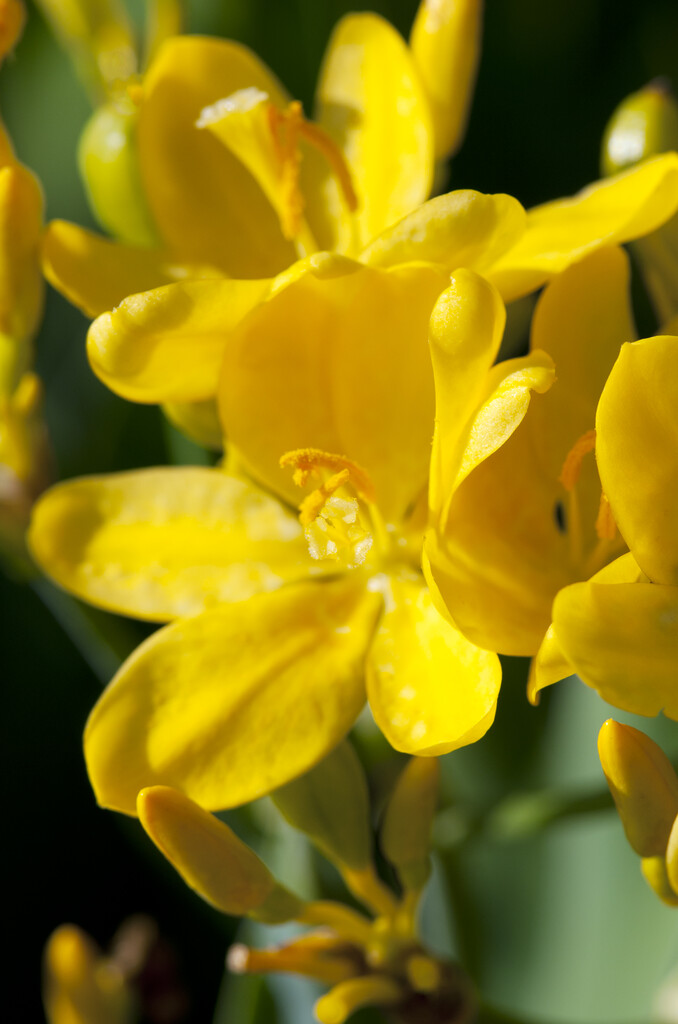Iris domestica 'Hello Yellow'
iris 'Hello Yellow'
A rhizomatous perennial, to around 45cm high in flower, with fans of upright sword-shaped, grey-green leaves. Small, clear yellow flowers are borne on branching stems above the foliage, opening in succession from mid to late summer, and followed by papery seed pods containing clusters of shiny black seeds

Size
Ultimate height
0.1–0.5 metresTime to ultimate height
2–5 yearsUltimate spread
0.1–0.5 metresGrowing conditions
Moisture
Well–drained, Moist but well–drainedpH
Neutral, AcidColour & scent
| Stem | Flower | Foliage | Fruit | |
| Spring | Green Grey Silver | |||
|---|---|---|---|---|
| Summer | Yellow | Green Grey Silver | ||
| Autumn | Green Grey Silver | Black | ||
| Winter |
Position
- Full sun
Aspect
South–facing
Exposure
Sheltered Hardiness
H7Botanical details
- Family
- Iridaceae
- Native to GB / Ireland
- No
- Foliage
- Deciduous
- Habit
- Clump forming
- Potentially harmful
- Harmful if eaten. Wear gloves and other protective equipment when handling. Pets: Harmful if eaten. For further information and contact numbers regarding pets, see the HTA guide to potentially harmful plants
- Genus
Iris may be rhizomatous or bulbous perennials, with narrow leaves and erect stems bearing flowers with 3 large spreading or pendent fall petals, alternating with 3 erect, often smaller, standard petals, in late winter, spring or early summer
- Name status
Accepted
How to grow
Cultivation
Thrives in a sunny position, in moist but well-drained, ideally neutral to slightly acid soil. Will tolerate some dappled shade, though they flower best in full sun. Mulch in winter
Propagation
Propagate by division, see dividing iris for more detailed advice
Suggested planting locations and garden types
- City and courtyard gardens
- Cottage and informal garden
- Rock garden
- Flower borders and beds
- Wall side borders
- Cut flowers
Pruning
Remove spent flower stems after flowering, and any dying foliage in autumn
Pests
Diseases
May be susceptible to aphid-borne viruses, bacterial soft rot and grey moulds; see Iris diseases
Get involved
The RHS is the UK’s gardening charity, helping people and plants to grow - nurturing a healthier, happier world, one person and one plant at a time.